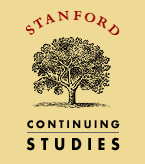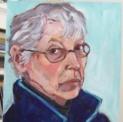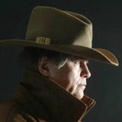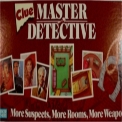Tuesday, May 27: High-Heeled Gumshoe
THE LITERARY CRAFT?
by Melodie Johnson Howe
 The following are two descriptions of short story writing courses being taught by Stanford University online that were sent to me via e-mail. I’m pleased that they are teaching the short story, but some of the terminology they used gave me pause. Here is the first one.
The following are two descriptions of short story writing courses being taught by Stanford University online that were sent to me via e-mail. I’m pleased that they are teaching the short story, but some of the terminology they used gave me pause. Here is the first one.
Fiction Writing: The Short Story Cycle (Online Course) (EGL 275 W)
Ever since Joyce’s Dubliners and Sherwood Anderson’s Winesburg, Ohio, writers have been attracted to the short story cycle—a collection of freestanding short stories that share the same characters, setting, or themes. Also called “novels-in-stories,” these collections combine the poetic immediacy of the short story with the scope and emotional investment of a novel. In the past ten years, they have become so popular that it is rare to visit a bookstore without encountering one of these linked collections prominently displayed among the new releases. In this online course, we will write a series of linked exercises that are suggestive of the form, culminating in a full-length short story that will be critiqued by the class. We will also read celebrated examples of the short story cycle by writers such as Alice Munro and Russell Banks, looking at them through the lens of literary craft. The goal of this course is to help intermediate short story writers begin to think in terms of a longer project, one that may someday lead to a unified, marketable, compellingly original book.
I like the phrase, “poetic immediacy.” Translated that’s an image that grabs you around the throat and won’t let go. The best short stories have this quality. But I don’t believe the instructor was thinking of Raymond Chandler, James Elroy, Walter Mosley, Margret Millar or Joyce Carol Oates( in her mystery stories) when he wrote it. My reason for this is the following phrase: “through the lens of the literary craft.” His students might be going through the lens of the literary craft darkly.
To use the word “literary” to describe craft shouldn’t irritate me but it does. What’s wrong with “the craft of writing” or “the craft of fiction”? How do you teach through a “literary lens”? If you’re reading literary writers to inspire, then great. I too have been inspired by many of them. But I sense an exclusive tone here. I sense a clique of writers learning to write like other writers who sell to smaller and smaller journals that only these writers, who write for each other, deem important. I may be genre–sensitive (that’s an academic sounding term the professors would like), but the exploration talked about in this course is very narrow indeed.
On the other hand the idea of linking short stories is worthy. And something mystery writers should do more often. Walter Mosley did it in Six Easy Pieces.
Short Story Writing (Online Course) (EGL 123 W)
In this course, students will cultivate the imaginative, critical, and technical skills necessary for writing effective short stories. Using the published work of well known authors, as well as original student writing, we will explore common problems encountered when attempting to write a literary short story. Students will learn how to properly submit their work for publication, as well as how to read short stories as writers—not as mere critics of literature. Each text that we encounter will be reviewed as a template for imitation and inspiration.
This course follows the classic workshop model wherein students will submit one short story for group discussion, and constructively critique each other’s work. Through this process, students will be able to hone their stories into more polished pieces, and everyone will learn a variety of techniques for improving their writing. Successful short stories have been defined as “something that can be read in an hour and remembered for a lifetime.” The ultimate goal of this course is to help you create just such a narrative.
Here we go again. “ … we will explore common problems encountered when attempting to write a literary short story.” Why not just short story? And what are the common problems that writers have when crafting these literary short stories that others writers don’t have. Is it that you have to work hard to make nothing happen in the short story for it to be literary? And if something does happen to you have to learn exactly where and how to edit it out? If you have to know what makes your story “literary” or not then you’re in deep trouble as a writer.
Then we come to this: “ … how to read short stories as writers—not as mere critics of literature.”
Say what? Who reads as a “mere critic” of literature? Mere critic?! What world are these lit … er … ary people living in? I read James Joyce’s Dubliners the same way I read Raymond Chandler’s short stories—with joy and always with surprise. As a writer do I look for things to help me such as technique? I try, but I end up being wrapped up in the story and forget to be a mere critic, or even a mere writer. I turn into a mere reader. I become absorbed in these works. They stir me with the power of their words, metaphors, and sharp characterization. Nobody taught me this. Yes, you can read these writers for their craft and should. Just don’t put the word “literary” on any of it.
The next line tells all. “Each text that we encounter will be reviewed as a template for imitation and inspiration.” Imitation? Who are they teaching, chimpanzees? Imitation in writing is not the sincerest form of flattery. It’s bad writing.
The word “text” is always a tip-off for me. I don’t know why, but it raises my hackles. Text is something in a manual. Text is in a text book. I know it only means content or words. But there’s an attitude that goes along with the word “text” in the academic community. Professors are like the murderer who must psychologically disassociate himself from all human feelings in order to kill. That’s why they can deconstruct a text, sucking the life out of it, without any remorse. It’s just “content.”
I like the definition of the short story as being, “something that can be read in an hour and remembered for a lifetime.” Yes, there are many short stories lingering in my memory and I am grateful to have them there.
Now that I have deconstructed the text of these two courses, I will give the web address of the online classes here.
You never know where you might learn a thing or two; but I think the new writers out there ought to be strong enough to know first what they want to write.




















When I worked at the Mystery Bookstore, I once went to dinner with MWA Grand Master Joe Gores and Robert Crais. Joe related an anecdote regarding Stanford writing programs.
At the time, William Saroyan was their great creative writing guru. Joe applied to the program and sent several of his stories as samples of his work. Saroyan rejected his application, stating that Gores’ stories read like they were intended to be sold.
What a literary crime! Writing commercial fiction!
Of course, since then it has come out that Saroyan was a plagiarist. But Joe Gores remains one of the great originals in American letters.
With respect, may I offer a differing view?
Both mainstream (literary) fiction and mystery fiction have long, separate traditions.
Contemporary writers of puzzle plot mystery fiction, such as Edward D. Hoch, John L. Breen and Paul Halter are writing in the mystery tradition of Carr, Christie and Queen. They are not trying to write mainstream stories that resemble Chekhov, Joyce or Katherine Mansfield.
Conversely, there are a lot of contemporary writers that want nothing so much as to be the next Gertrude Stein or Hemingway. What is wrong with that? They have a hard row ahead of them: there is very little market for such fiction. But if that’s their dream, why not be frank about it?
There is a gulf between these two traditions. Admittedly, some writers such as Chandler tried to combine the two approaches. But many authors have no interest in such hybrids.
Why not recognize this?
I don’t think that Melodie is disparaging writers who want to write something other than crime fiction. What she’s objecting to, and for the most part correctly in my view, is the academic and intellectual ostentation that accompanies so-called “literary” fiction.
All fiction is literary to one degree or another. If the goal of these courses is to hone the skills required to effectively tell stories, they might think of doing so without all the critical claptrap.
I kept mum on this, but recently I’ve noticed a tendency among my colleagues to conflate the term “deconstruction” with “analysis”. Deconstruction is a very specific kind of criticism, being “a strategy of critical analysis associated with the French philosopher Jacques Derrida, directed towards exposing unquestioned metaphysical assumptions and internal contradictions in philosophical and literary language” (according to the OED). It is not synonymous with analytic method.
But Derrida is the poster boy for pretentious rhetoric, so I guess the detection of obscurant prose naturally evokes his image.
Mike,
If writers want to write “literary” fiction, I would be the last one to keep them from it. My point is the emphasis on literary. Hemmingway wrote like Hemmingway before he became “literary.”
I fear that young writers will be forced into a set of rules that will keep then from finiding their own vioice. This can also happen in writing crime fiction, too.
James,
I used the word “deconstruction ” on purpose. I also used it just for the fun of it.
Back on May 9, I mentioned the word “deconstruction” while discussing literary analysis. At that time I said, “Deconstruction is a nice word, but it already means something else,” referring to Derrida’s use of the term. (I’ve tried to make sense of Derrida, but I’m skeptical that even he knew what he was talking about). It’s too bad he commandeered the term.
When I was a kid and took apart my toys to see how they worked, what was a doing? Reverse engineering? Disassembling?
Anyway, this is off topic. Melodie, it was a great column. Most of what is called “literary fiction” is in my opinion effete, plotless prattle.
James, your Saroyan story says it all. The tendency of literary snobs to thumb their noses at “genre” fiction is pompous and hollow.